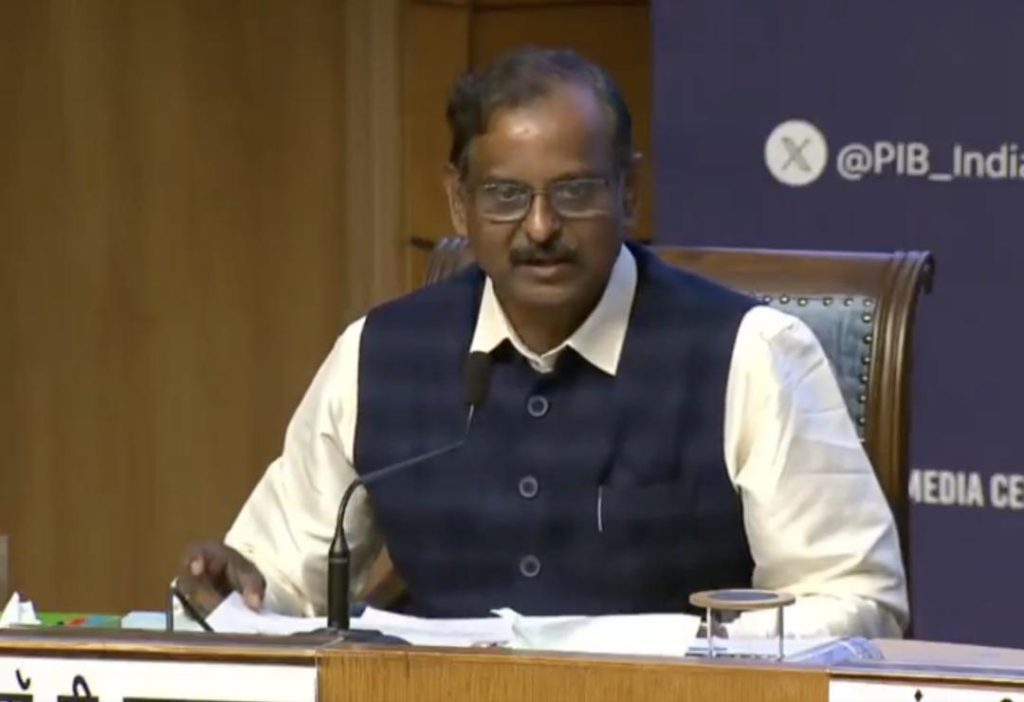
Missions Targeted Doubled from 2005-2015 to 2015-2025: ISRO Chairman
In a recent statement, ISRO Chairman V Narayanan revealed that the organization has set its sights on doubling the number of missions it plans to undertake in the next decade, from 2005-2015 to 2015-2025. This ambitious goal is a testament to the organization’s commitment to advancing India’s space exploration capabilities and pushing the boundaries of what is possible.
The announcement comes at a time when ISRO has been making significant strides in recent months. In the past six months alone, the organization has accomplished several crucial missions, including the successful launch of the Axiom-4 mission led by Shubhanshu Shukla and the launch of the NASA-ISRO joint satellite using GSLV-F16.
One of the most notable upcoming missions is the launch of the US’s 6,500 kg communication satellite. This massive satellite is a significant undertaking for ISRO, as it will require the organization to utilize its most powerful rocket, the Geosynchronous Satellite Launch Vehicle (GSLV). The launch is expected to be a major milestone for ISRO, as it will demonstrate the organization’s ability to launch heavy payloads into orbit.
The doubling of missions targeted by ISRO is a significant step forward for the organization. In the past decade, ISRO has achieved numerous milestones, including the successful launch of the Chandrayaan-1 mission, which included a lunar impactor and an orbiter. The organization has also launched several communications satellites, including the GSAT-14 and GSAT-15.
However, despite these achievements, ISRO has faced its share of challenges in recent years. In 2017, the organization suffered a major setback when its GSLV-F05 rocket failed to launch the GSAT-14 satellite into orbit. The failure was attributed to a technical glitch, and ISRO was forced to conduct an investigation to determine the cause of the problem.
Despite this setback, ISRO has continued to push forward, investing heavily in new technologies and infrastructure. The organization has also established partnerships with other space agencies around the world, including NASA and the European Space Agency.
One of the key factors driving ISRO’s growth and ambition is the increasing demand for satellite services in India. The country is in need of reliable and high-quality satellite services to support its growing economy and population. ISRO’s satellites are used for a wide range of applications, including telecommunications, navigation, and weather forecasting.
In addition to its commercial applications, ISRO’s satellites also play a critical role in supporting India’s national security. The organization’s satellites are used to monitor border regions and provide critical intelligence to the Indian military.
ISRO’s plans for the next decade are ambitious, with the organization targeting a significant increase in the number of missions it undertakes. The organization is also investing in new technologies, including reusable rockets and advanced propulsion systems.
The success of ISRO’s missions will depend on a number of factors, including the availability of funding and the ability of the organization to attract and retain top talent. However, with its track record of success and its commitment to advancing India’s space exploration capabilities, ISRO is well-positioned to achieve its goals.
In conclusion, ISRO Chairman V Narayanan’s announcement that the organization has targeted almost double the missions in 2015-2025 than it targeted in 2005-2015 is a significant step forward for the organization. With its track record of success and its commitment to advancing India’s space exploration capabilities, ISRO is well-positioned to achieve its goals and continue to play a critical role in supporting India’s economy and national security.
Source: https://x.com/airnewsalerts/status/1958439502579376273






